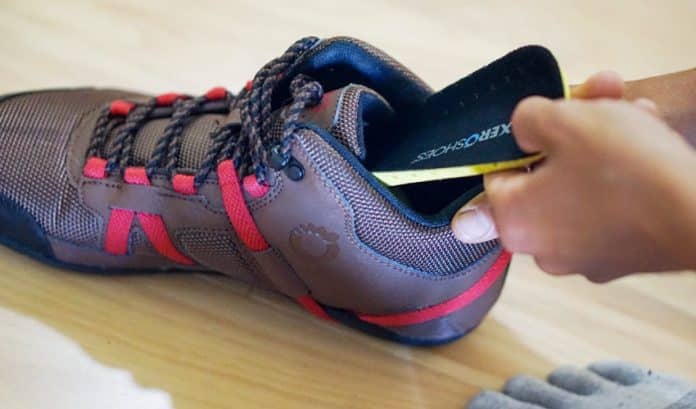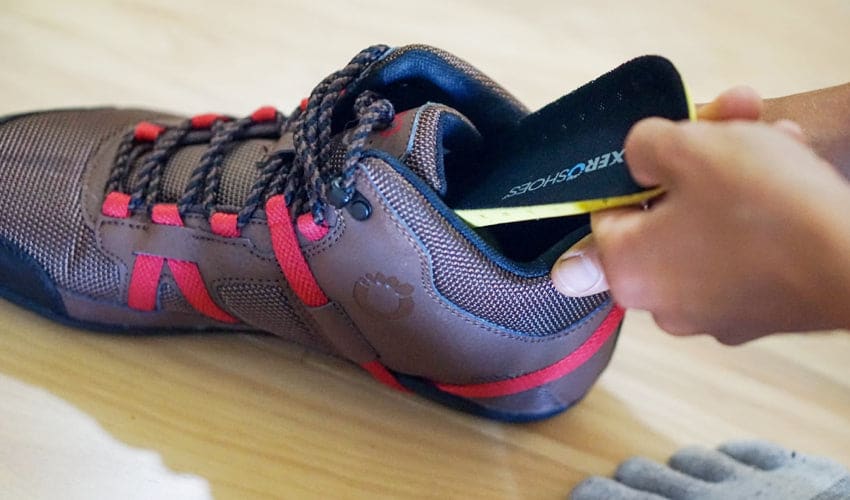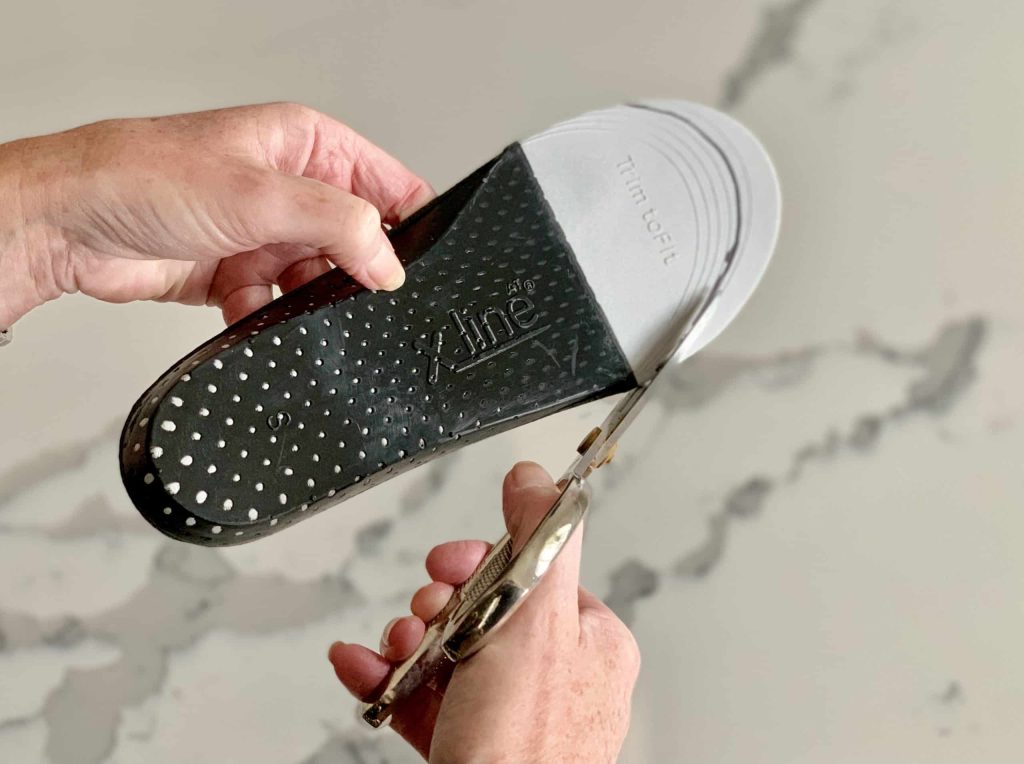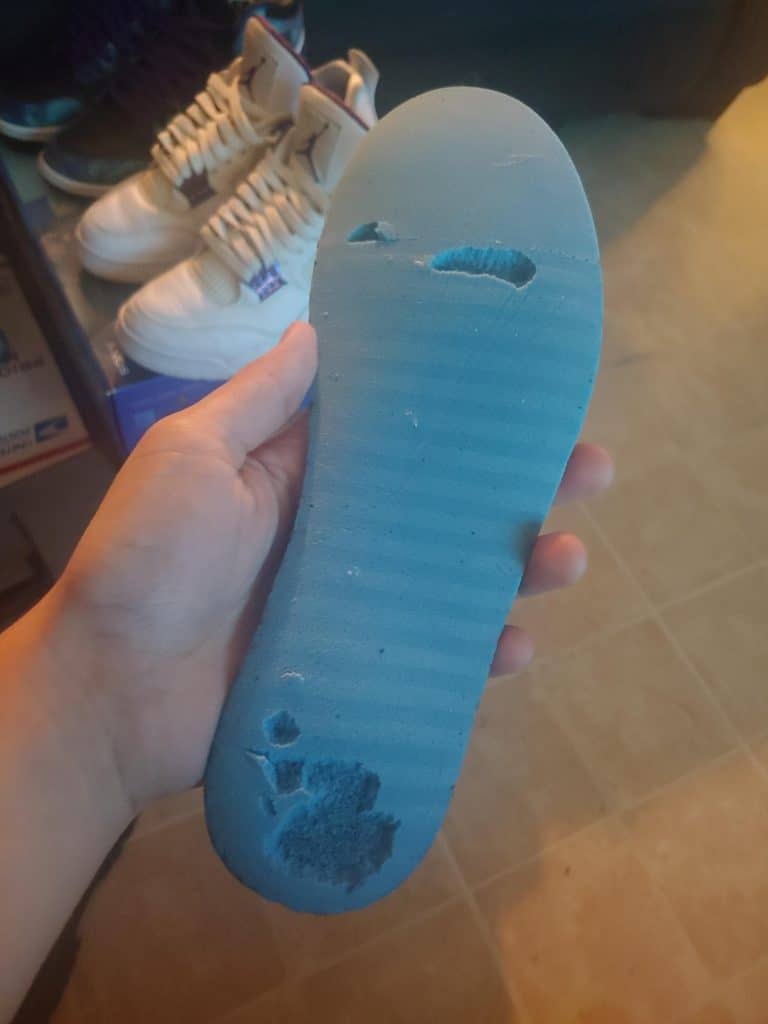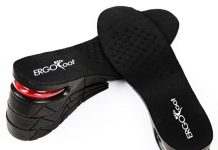So, you’ve decided to try out some new insoles to enhance the comfort and support of your shoes.
But here’s the question: do you remove the existing insoles when using new ones?
It’s a common dilemma many people face, and in this article, we’ll explore the pros and cons of removing the original insoles when using additional ones.
Whether you’re searching for added cushioning or better arch support, we’ll guide you through decision-making, ensuring that your feet feel their best every step.
The Importance of Insoles
Insoles are an essential footwear accessory that provides comfort and support to your feet. They are designed to fit inside your shoes, offering cushioning and stability and correcting various foot problems.
Insoles play a significant role in preventing foot fatigue and ensuring overall foot health. Whether you have a specific foot condition or want to enhance your foot alignment, using the correct insoles can make a difference.
Providing Comfort and Support
One of the primary benefits of using insoles is the comfort they provide. Insoles are often made from soft and cushioning materials that offer an additional layer of padding between your feet and the ground.
This extra support helps to distribute the weight evenly across your feet, relieving pressure points and reducing discomfort. By absorbing shock and reducing the impact on your feet, insoles can help prevent fatigue and improve your overall comfort while walking or standing for long periods.
Correcting Foot Problems
Another critical role that insoles play is in correcting various foot problems. Different insoles are available to address these concerns, whether you have flat feet, high arches, or overpronation.
Arch support insoles, for example, are specifically designed to provide additional support to the arch of your feet, helping to alleviate pain and discomfort caused by fallen arches or flat feet. On the other hand, orthotic insoles are custom-made to suit your specific foot shape, providing personalized support and correction for various foot conditions.
Preventing Foot Fatigue
Foot fatigue is a common issue many people experience, especially those on their feet for extended periods. This can be particularly problematic for individuals who work in professions that require standing or walking for long hours.
Insoles can help prevent foot fatigue by reducing the stress and strain on your feet. The cushioning and support insoles can help absorb the shock from repetitive movements and reduce the impact on your lower limbs. By promoting proper foot alignment and reducing fatigue, insoles can help you stay comfortable and energized throughout the day.
Types of Insoles
Regarding insoles, several different types are available, each catering to specific needs and preferences. Understanding the different types can help you choose the most suitable insoles for your feet.
Arch Support Insoles
Arch support insoles are specifically designed to provide additional support to the arch of your feet. Suppose you have low arches or flat feet.
In that case, these insoles can help correct your foot alignment and reduce the risk of developing foot-related issues such as plantar fasciitis or overpronation. Arch support insoles are typically made from firm materials that provide stability to the arch, promoting proper foot positioning.
Cushioning Insoles
Cushioning insoles are designed with comfort in mind. They are made from soft, responsive materials that offer extra padding and shock absorption.
These insoles help reduce the impact on your feet and provide cushioning and support to the entire foot surface. Cushioning insoles can be particularly beneficial for individuals who spend much time on their feet or engage in high-impact activities.
Orthotic Insoles
Orthotic insoles are custom-made to suit your specific foot shape and provide personalized support. These insoles are usually prescribed by a podiatrist or foot specialist and are tailored to address specific foot conditions or alignment issues.
Orthotic insoles are made from a mold of your feet, offering maximum comfort, support, and correction.
When to Use Insoles
Insoles can be used to address different foot concerns and promote foot health. Here are some instances where using insoles can be beneficial:
Foot Pain or Discomfort
If you experience foot pain or discomfort, especially after prolonged periods of walking or standing, using insoles can provide relief.
The additional support and cushioning offered by insoles can help alleviate pressure points and reduce pain caused by conditions like plantar fasciitis, metatarsalgia, or heel spurs. Insoles can provide the necessary support to keep your feet comfortable and pain-free throughout the day.
Foot and Ankle Injuries
Insoles can also be used during the recovery phase of foot and ankle injuries. When you have a sprain, strain, or other soft tissue injuries, using insoles can help stabilize and support the affected area. Insoles can provide extra cushioning and protection, allowing for a more comfortable and efficient healing process.
Specific Foot Conditions
Individuals with specific foot conditions may benefit significantly from using insoles. Whether you have flat feet, high arches, or conditions like plantar fasciitis or bunions, insoles can help alleviate symptoms and provide the necessary support and correction. Custom orthotic insoles are especially effective in addressing specific foot conditions, as they are tailor-made to suit your unique foot shape and alignment.
Benefits of Using Insoles
Using insoles offers a range of benefits that go beyond comfort and support. Here are three key advantages of incorporating insoles into your footwear routine:
Improved Foot Alignment
Proper foot alignment is crucial for overall foot health and biomechanical efficiency. Insoles can help optimize foot alignment by providing the necessary support and correction. Insoles can help promote proper foot positioning and reduce the risk of further complications, whether you have fallen arches, overpronation, or other alignment issues. Improved foot alignment can lead to better posture and overall body alignment.
Reduced Pain and Discomfort
Insoles are designed to alleviate pain and discomfort associated with various foot conditions.
By providing additional support and cushioning, insoles can help distribute pressure evenly across your feet, reducing the strain on specific areas. Insoles can offer significant relief and enhance your overall comfort, whether you have chronic foot pain, heel pain, or ball-of-foot pain.
Enhanced Performance
Insoles can also enhance athletic performance by providing better shock absorption and stability. If you engage in high-impact activities such as running or jumping, using insoles designed for sports can help reduce the stress on your feet and lower limbs.
Insoles can help you perform at your best and minimize the risk of injuries by improving foot alignment and reducing fatigue.
Potential Reasons for Removing Insoles
While insoles can provide numerous benefits, there may be occasions when you need to remove them. Here are a few potential reasons for removing insoles:
Uncomfortable Fit
If your insoles are causing discomfort or pain, it may be necessary to remove them. Sometimes, the fit may not be ideal, and the insoles may create pressure points or irritate certain areas of your feet. If you experience discomfort or pain while wearing insoles, assessing the fit and considering removing or replacing them is essential.
Limited Space in Footwear
Some shoes, particularly those with a tight or narrow fit, may not have enough space to accommodate insoles. If your shoes feel too tight or squeeze your feet when you insert insoles, it may be necessary to remove them to ensure proper footwear fit. However, it is essential to note that removing insoles may significantly impact the comfort and support provided by the shoes.
Customized Orthotic Insoles
If you have custom-made orthotic insoles, using them without removing or replacing them with other insoles is generally recommended. Custom orthotic insoles are designed to address your unique foot condition and provide personalized support. Removing them may diminish their corrective effects and compromise your foot health.
Methods of Using Insoles
When it comes to using insoles, there are several methods you can follow depending on your needs and preferences. Here are three standard methods of using insoles:
Replacing Existing Insoles
One method is to replace the existing insoles in your shoes with a new pair of insoles. This method is suitable when the existing insoles are worn out or not providing the necessary support or comfort. Remove the original insoles and insert the new ones, ensuring they fit correctly and do not create any discomfort.
Using Insoles on Top of Existing Insoles
If your shoes have removable insoles, you can use your new insoles on top of the existing ones. This method can be helpful if you require additional cushioning or support but still want to retain the benefits of the original insoles. However, ensuring that the combined thickness of both insoles does not cause your shoes to feel tight or uncomfortable is essential.
Adapting to Different Footwear
Insoles can also be used interchangeably across different pairs of footwear. If you wear multiple pairs of shoes regularly, you can remove the insoles from one pair and transfer them to another. This way, you can enjoy the benefits of the insoles regardless of the shoes you wear, providing consistent support and comfort to your feet.
Factors to Consider
When choosing and using insoles, there are several factors you should consider to ensure optimal fit, support, and comfort. Here are three key factors to keep in mind:
Footwear Design and Fit
Different insoles may be better suited to specific shoe designs and fit. When selecting insoles, consider the type of footwear you intend to use them in. Some insoles may be too thick for dress shoes or have features that do not aligning well with specific shoe designs. Choosing insoles compatible with your footwear is essential to ensure proper fit and functionality.
Insole Material and Thickness
The material and thickness of the insole can also impact your comfort and support. Different materials offer varying levels of cushioning and responsiveness. While some individuals may prefer a softer, more shock-absorbing material, others may prefer a firmer material that provides excellent stability.
Additionally, the thickness of the insole can affect the fit of your shoes, so it is essential to consider the space available inside your footwear when selecting the thickness of the insole.
Personal Comfort and Preference
Ultimately, personal comfort and preference should guide your choice of insoles. Everyone’s feet are unique, and what works for one person may not work for another.
Try different insoles and determine which ones feel most comfortable and supportive of your specific needs. Pay attention to how your feet feel when wearing different insoles and adjust accordingly.
How to Decide Whether to Remove Insoles
Deciding whether or not to remove insoles can sometimes be a subjective decision. Here are three factors to consider when deciding whether to remove your insoles:
Consider the Purpose of Insoles
Think about why you are using insoles in the first place. If you are using them to address a specific foot condition or to provide personalized support, it may be best to keep them in place.
Removing the insoles could compromise the benefits they offer. On the other hand, if you use insoles solely for comfort and find that they are causing discomfort or hindering your foot movement, it may be worth considering removing them.
Evaluate Insole Fit and Comfort
Assess the fit and comfort of the insoles in your shoes. If the insoles fit well, provide proper support, and do not cause discomfort or pain, removing them may not be necessary.
However, if you find that the insoles are causing discomfort, creating pressure points, or not aligning correctly with your feet, removing or replacing them may be necessary.
Seek Professional Advice
When in doubt, seeking professional advice from a podiatrist or foot specialist is always beneficial. They can assess your feet, foot conditions, and footwear to provide personalized recommendations. They may suggest custom orthotic insoles or adjustments to your current insoles to ensure optimal fit, support, and comfort.
Tips for Removing and Reinserting Insoles
If you decide to remove or replace your insoles, here are some helpful tips to follow:
Gently Remove Existing Insoles
To remove existing insoles, gently pull them out of your shoes. Be careful not to damage or tear the insoles or the shoe lining in the process. If the insoles are stuck or adhered to the shoe, use a gentle pulling motion or consider using a shoe horn to remove them.
Clean and Dry the Footwear
Before inserting new insoles, clean and dry the inside of your shoes. This will help maintain hygiene and prevent any unpleasant odors. Use a mild detergent or shoe cleaner and a soft cloth to wipe the interior of the shoes. Allow them to air dry completely before inserting the new insoles.
Properly Insert New Insoles
When inserting new insoles, ensure they fit correctly inside your shoes. Align them with the inner contours of the shoe and ensure they lie flat and do not crease or bunch up. Take time to position the insoles to ensure optimal fit and comfort correctly. Double-check that they do not cause discomfort or tightness before wearing the shoes.
Caring for Insoles
Proper care is essential to ensure your insoles’ longevity and effectiveness. Here are some tips for caring for your insoles:
Regular Cleaning and Maintenance
Insoles can accumulate dirt, sweat, and bacteria over time. To maintain hygiene and freshness, it is essential to clean them regularly. Depending on the material, you can wash them by hand with mild soap and water or follow the manufacturer’s instructions for cleaning. Allow the insoles to air dry thoroughly before reinserting them into your shoes.
Replacing Worn-Out Insoles
Over time, insoles can become worn out and lose their effectiveness. If you notice signs of wear, such as visible thinning, flattening, or decreased support, it is time to replace them. Regularly inspect your insoles for any signs of wear and replace them as needed to ensure continued comfort and support.
Storing Insoles Properly
Store your insoles in a cool and dry place when not in use. Avoid exposing them to direct sunlight or extreme heat, which can damage the materials and reduce their lifespan. Storing them properly will help maintain their shape and prevent any deterioration.
In conclusion, insoles are crucial in providing comfort, support, and correction for your feet. Whether you have specific foot conditions or want to enhance your overall foot health, choosing the right insoles is essential.
Consider foot alignment, comfort, and footwear compatibility when selecting and using insoles. If you experience discomfort or have concerns about your insoles, seek professional advice.
Remember to properly care for your insoles to ensure their longevity and effectiveness. By incorporating insoles into your footwear routine, you can enjoy improved foot alignment, reduced pain and discomfort, and enhanced performance.

